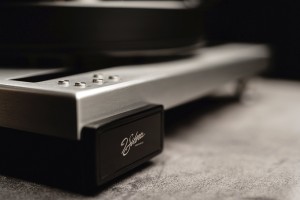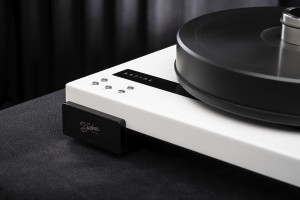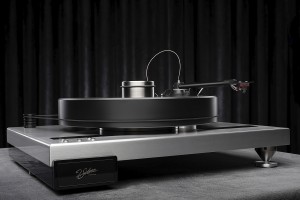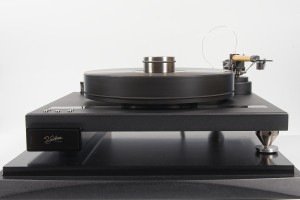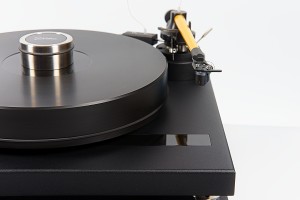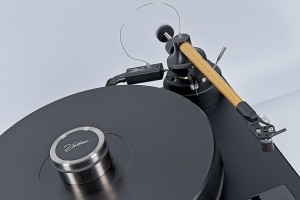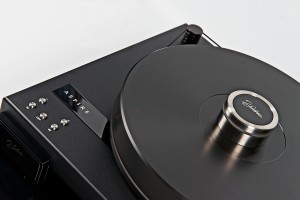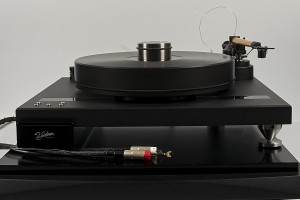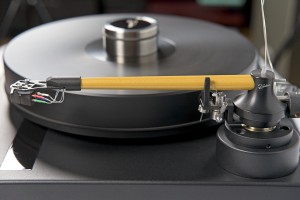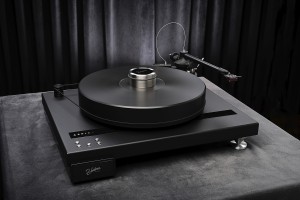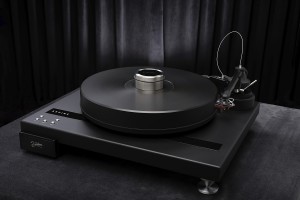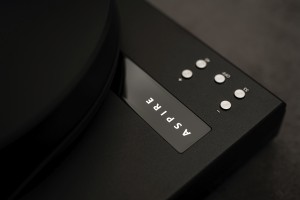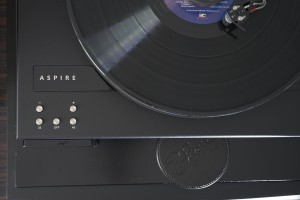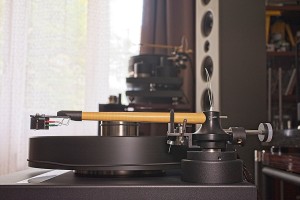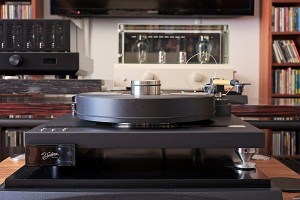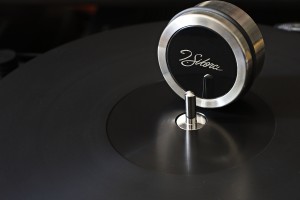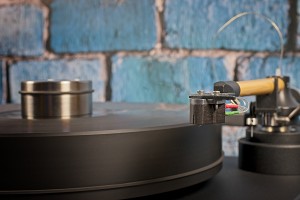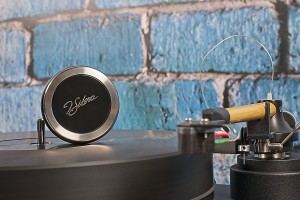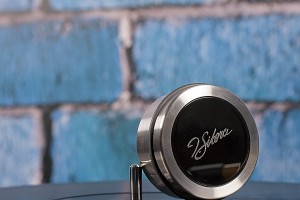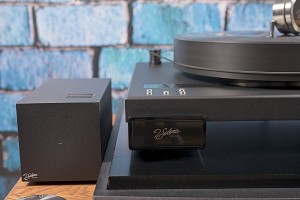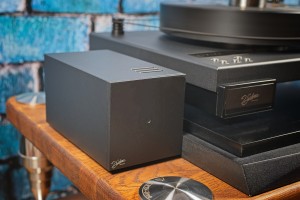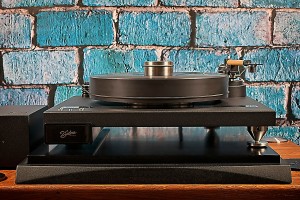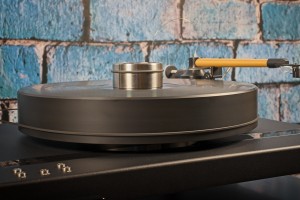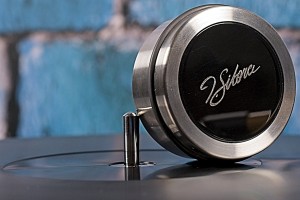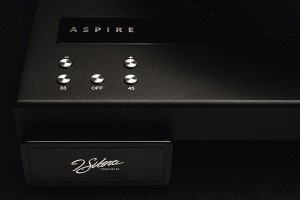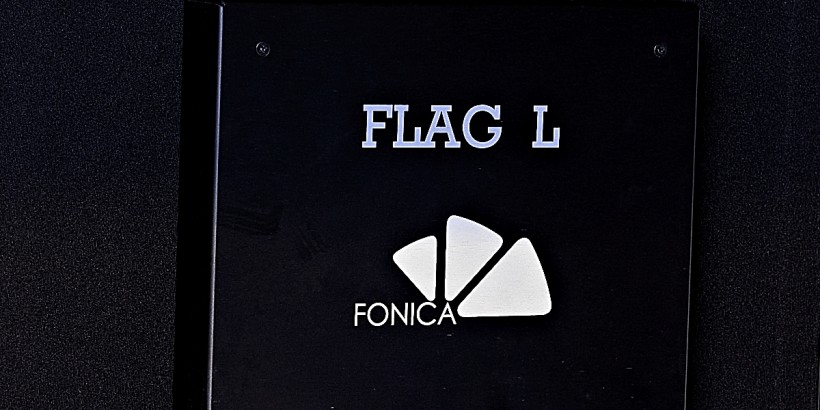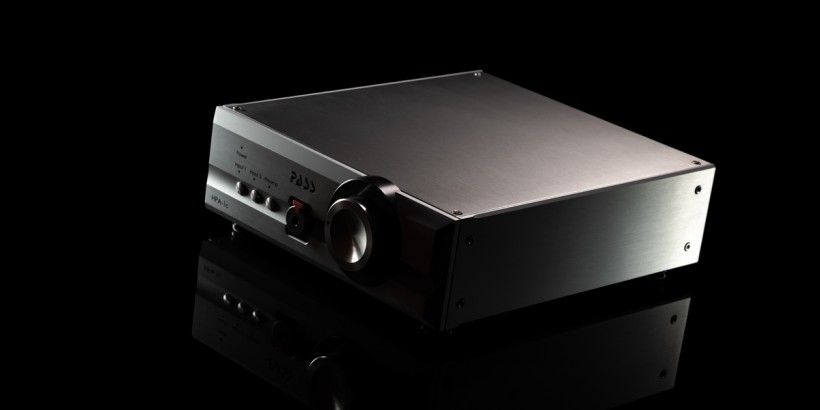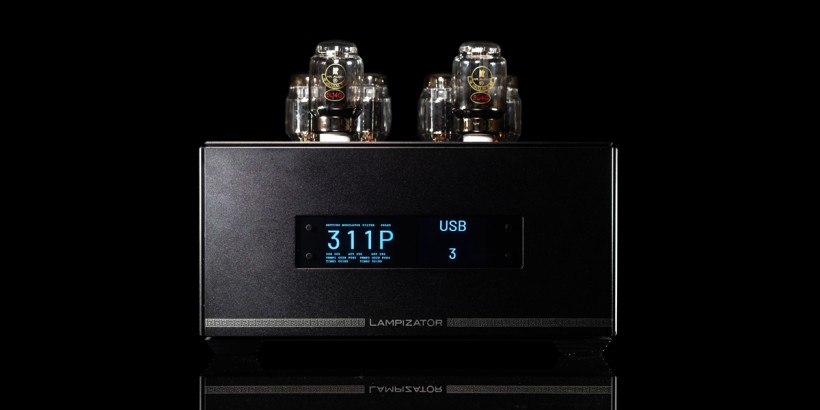It is quite small, looks sharp, and shares many features with its bigger, more expensive siblings, yet, according to the manufacturer, it only aspires to… What does J.Sikora Aspire aspire to? Let’s find out together.
Introduction
The latest addition to J.Sikora’s lineup is not their first attempt to offer a taste of their highly acclaimed turntables’ performance to those who don’t plan to spend that much on their new deck but still expect a lot in return. I remember talking to Janusz Sikora, maybe 3-4 years ago, and asking him about what he was working on. Back then, he told me that they wanted to offer a less expensive turntable (than Initial), but that he couldn’t do it without compromising too much of the exceptional sound quality their products were famous for. So he gave up at some point.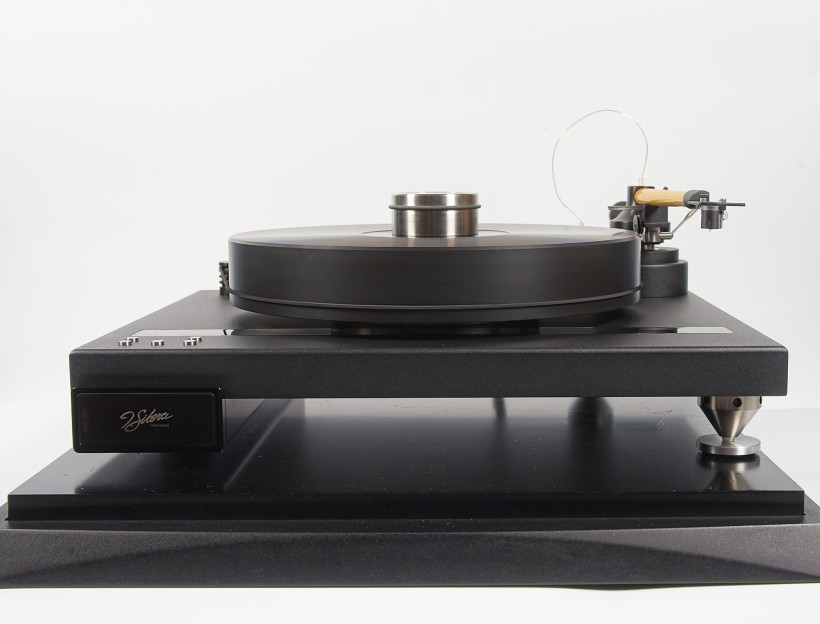
It took a different approach, a few more years of experience, ideas pitched in by the entire team, and an expanded machine park to allow J.Sikora to develop their new entry-level product. Before starting the project, designers had to clearly establish the premise for it. They took into account some requirements or requests that came from the distributors, and some features were a must that the brand stood by to make sure that the make, finish, and sound quality were still worthy of J.Sikora’s reputation.
What distributors asked for (apart from a certain price level) was that the new deck would be easy to handle, meaning relatively small, not very heavy, easy to set up, and operate. To make sure the new model would fit well into the range, the manufacturer decided to use a lot of already proven materials and solutions that worked so well for the Initial, Standard, and Reference models. The final result of balancing between distributors’ expectations and the bar that J.Sikora’s team set quite high for the new product was named ASPIRE. It was a team effort, as Robert Sikora emphasized more than once during our conversation. All the members of the crew worked really hard to make sure the new product would become a part of their legacy. Let’s check out what the final result of this project is.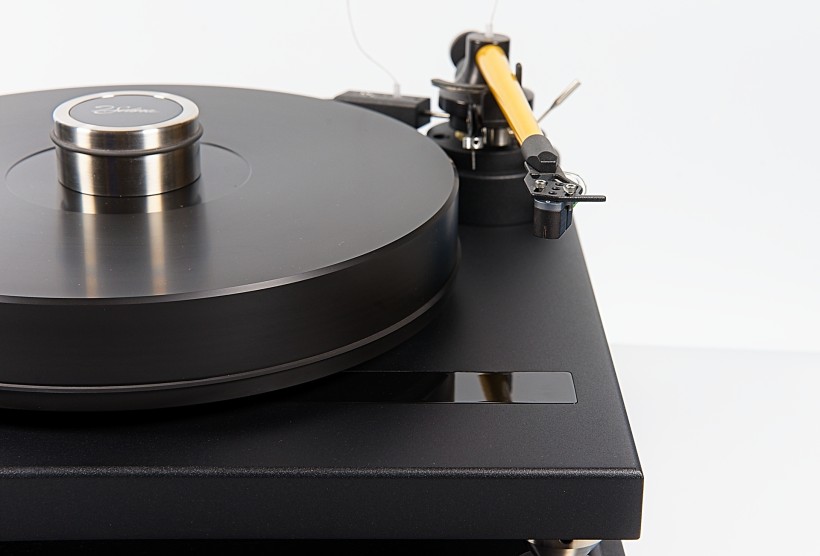
Design and Features
I am used to the bulkiness of my Standard Max or the Reference that I often see at J.Sikora’s showroom and presentations at various shows. In comparison, ASPIRE seems tiny even against the Initial, at least in my mind, as when I confronted the data supplied by the manufacturer for both of them, I couldn’t believe that these two share almost the same footprint. The difference in the latter is negligible, but remember that the Initial features a separate box with the controller inside. It is also more bulky, as proven by seven kilograms more that show on a scale.
First things first. The aforementioned footprint for ASPIRE is 430 x 350 x 180 mm, and it weighs 21 kg. Not much in J.Sikora’s terms, but still a lot for a relatively small deck. It features a single body chassis, as the controller’s housing is attached to its lower side. The chassis is a single, solid slab of aluminum PA6. There are three available finishes – black, silver, and white. I got the black for the review, but the manufacturer shared a few photos of the other two options so you can check them out as well.
Getting rid of unwanted vibrations is one of the keys to success for any turntable. That’s where J.Sikora’s designers didn’t want to compromise, so as standard, you will get it with the same adjustable steel cones sitting on a ceramic ball supported with aluminum pads with tiny silicone feet underneath. That’s one of the solutions that all models share. To make the setup even easier, some distributors requested a one-piece solution, and that means cones with rounded tips, no ceramic ball, and no pads. This will allow users to take the whole deck straight out of the box and place it on a rack or some other piece of furniture without chasing those tiny ceramic balls around the room.
Let me add my two cents. You should remember that this is still a significant, weighing 21 kg, piece of equipment, so if you’re going for the simpler solution, I would suggest adding some sort of metal pads between the rounded tips and the surface you will put it on. Why? In the long run, the weight is likely to make its mark on the surface below (unless it is really hard, such as glass or some sort of stone, but I wouldn’t recommend either of those as a base for this turntable anyway).
The front left corner of the chassis hosts familiar five metal push buttons that start and stop the motor, allow a user to choose the speed (33 1/3 or 45 r.p.m.), and adjust it, if needed. You may notice there is no display – that’s one of the compromises to lower the costs with absolutely no influence on performance, in other words, a smart one. Another solid block of the same type of aluminum (with minimal necessary milling) hosts a single motor, controller circuit, and wiring. It is fixed along the left edge of the chassis, to its lower side, so that the user controls the operation of the turntable via aforementioned buttons in the front, and in the back, on the upper side of the chassis, there is a pulley sitting on the axis of the motor.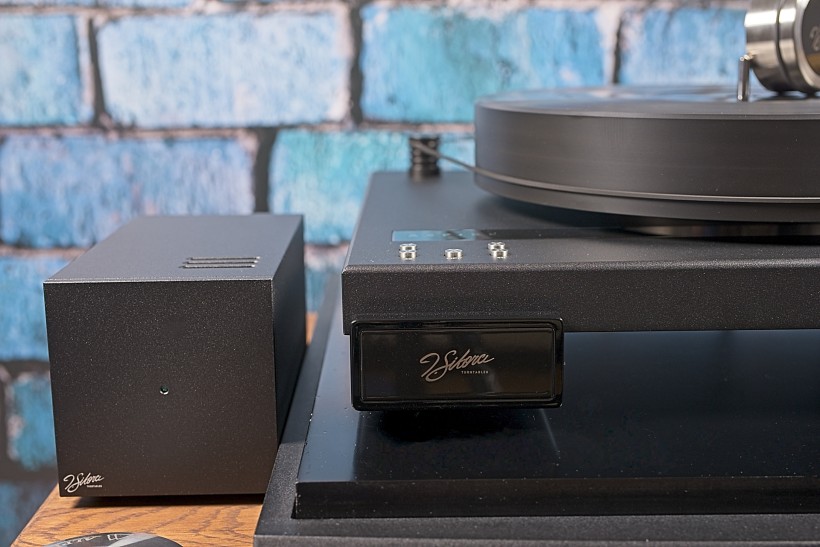
What’s important is that both, controller and the motor are also the same as used in the more expensive models, so no compromises here. It guarantees the same incredible stability of the rotational speed, which is one of the trademarks of all J.Sikora turntables. While some people do not fully appreciate this quality, it is absolutely essential in music reproduction, as it has an impact on timing, and also pitch, both easily audible when wrong. Obviously, the motor does not feature the same housing, but, as I was assured, the thoughtful design prevents transmission of the vibrations from the motor to the chassis, and it is bolted to the plinth with vibration-damping elements.
The pulley in the back left corner conveys the rotation from the motor’s axis via a single rubber belt directly to the platter. The latter comes from the Initial series, weighs 4 kg, and is made of Delrin. It sits on another familiar element, the inverted ceramic ball bearing. To reduce unwanted vibrations and resonances, the bearing was mounted on a centimeter-thick slice of cast iron. As a part of the set, you will also get a record clamp, although it is smaller and not as heavy as the one offered with more expensive models.
There are two more important elements left. First, the tonearm. Generally speaking, there will be two options. The more expensive one will include J.Sikora’s KV 9 Kevlar tonearm. I have reviewed the arm on my Standard Max deck (see HERE), and have been using it extensively for the last several months, also with the tested ASPIRE. First of all, it is an excellent arm that can be used even with way more expensive decks than the tested one. Secondly, it is a great match for this deck. On some markets, though, you will be able to buy an ASPIRE deck with OEM tonearms. It will cost significantly less, and the KV9 will always remain an upgrade option.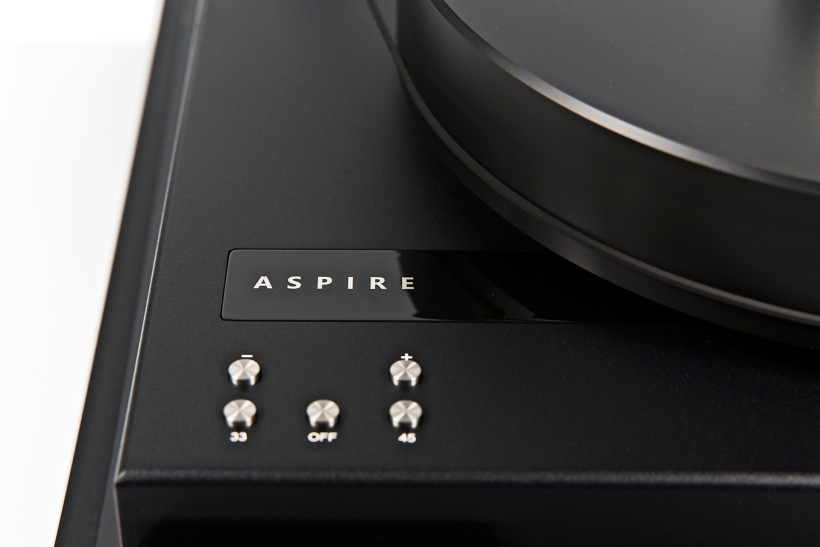
A second key element of the whole set is the power supply. The standard (which is actually the more expensive) version with the KV9 tonearm will also include the brand’s linear power supply, the same one that is usually sold with Initial and Standard. The cheaper version, on the other hand, will be sold with OEM tonearms and a simpler, laptop-style SMPS. I got both for the review, so you will learn about my thoughts and the differences between the two. Still, if you buy it with the SMPS, you can always upgrade to a linear PS later. For your information, the switch is very simple; all you have to do is unplug one, plug the other in, and that’s it.
Some other upgrades, the same ones as for the Initial line, will also be available for the ASPIRE users. Those include, for example, a glass mat or the bigger record clamp. Another one concerns the KV9 tonearm, as one can always add the on-the-fly VTA for convenience. All right, now you know what I know about ASPIRE, and it’s time to dive in.
Sound quality
As already mentioned, I tested the ASPIRE with the J.Sikora KV9 tonearm. The OEM tonearms, I am told, will be used locally, in some markets, to help the distributors go down with the price a little more. I set up the tested unit with the LeSon LS10 MK II MC combined initially with ESE Lab Nibiru MC and later GrandiNote Celio MK IV phono stages. These sent signal through Bastanis Imperial RCA interconnect (reviewed HERE) to either GrandiNote Shinai, my Class A solid-state integrated amplifier, or a loaner, another excellent performer, Phasemation SA-1500 300B SET. Either of those drove my GrandiNote MACH 4 speakers via Soyaton Benchmark MK2 speaker cables (see HERE).
The basic version of ASPIRE features a laptop-style SMPS, and that’s how I started my listening sessions (although with the KV9 that will be sold with the more expensive version that includes a linear power supply unit). In other words, it is unlikely that anyone will buy this deck with this tonearm and SMPS. Still, the point was to assess what the people who decide on the cheaper power supply are going to get, and what upgrading to a linear PS could offer them.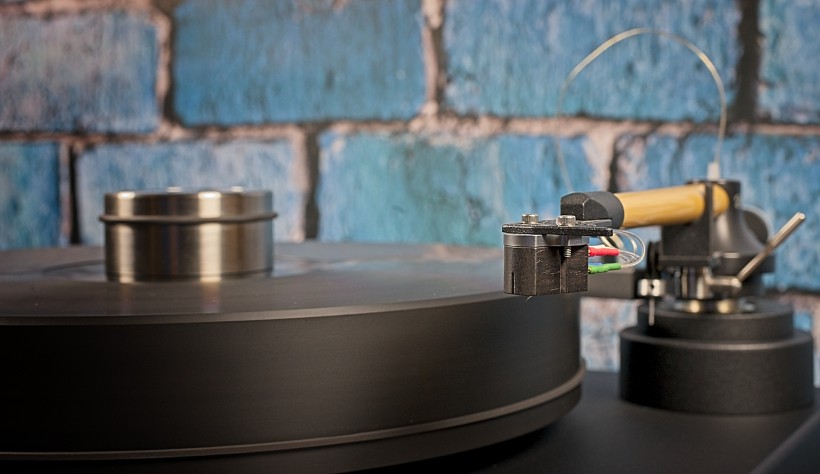
Right from the start, from the very first album, it felt like home for me. I mean, it was undeniable that ASPIRE shares a lot of DNA with its bigger siblings, hence the familiar feeling of „I’ve heard it before”. There was this unmistakable precision, an excellent detail retrieval, explosive dynamics, drive, power, (a slightly less powerful, but still) slam, and all that from that tiny little body (I mean, compared to my Standard Max, not to mention Reference) of the so-called entry-level J.Sikora deck.
I actually played some blues and rock albums first, and they rocked! Powerful, yet taut and fast bass lines, open, crisp treble, and smooth midrange came together into a coherent, highly energetic whole. ASPIRE delivered a fit-tapping, gut-punching performance that I’d known from all the other J.Sikora decks, as they all share these particular qualities regardless of the price point. With more expensive models, you get even more of everything, even better bass extension, more powerful punch, but the general sonic character is quite similar.
It was clear to me already at this stage of the test that, despite some compromises the engineers had to make to offer a smaller, lighter, less expensive product, it was still a turntable worthy of the J.Sikora logo. The performance was not quite as refined as with Standard or Reference, not quite as complete, but the latter cost way, way more. The whole test started to feel familiar because it reminded me in some ways of that of KV9. Also, the cheapest in the lineup, it delivers performance that comes really close to the Max series, and even surpasses the original KV12. It seems that J.Sikora guys don’t really know how to compromise, and even their least expensive products exceed expectations. That had been the case with KV9, and I was pretty sure that the history repeated itself with ASPIRE.
Now, despite my enthusiasm and true appreciation for the performance of the ASPIRE with KV9 and SMPS, it was not all perfect. What I missed in ASPIRE’s performance, particularly in comparison to more expensive models, concerned mostly richness and saturation of the sound (note that it’s an initial impression after listening to blues and rock albums, that are not audiophile recordings, so I couldn’t really assess some other aspects of the performance). As said before, the more expensive turntables did some things even „bigger, better, faster, more”, to quote the classic, which is expected from them, but in terms of richness and saturation, for my taste, ASPIRE did not do quite enough.
The solid bone structure of a great performance was there, the skin on it was there, and some flesh as well under the skin, but there wasn’t enough of it, if you know what I mean. That is why it sounded, on the one hand, a little bit analytical and detail-oriented (or at least directing the listener’s attention towards the details), and on the other, also a little bit dry, lean, and a touch cold for my taste. It was still a really good performance, in many (already described) ways better than almost any competitor from this price range I could think of, but I was sure it could and should get even better. I just needed to find a way.
The first remedy I thought of was replacing ESE Lab Nibiru MC (reviewed HERE) with my other phono stage, GrandiNote Celio MKIV (reviewed HERE). Both are excellent performers, punching way above their weight, but they differ quite significantly in terms of general sonic character, with the Class A GrandiNote being the one with richer, more saturated, and a touch warmer sound. I knew from experience that combined with Le Son LS 10 MK II cartridge (reviewed HERE), it delivers a beautifully natural, rich, warm performance that I love. I wanted that also with ASPIRE.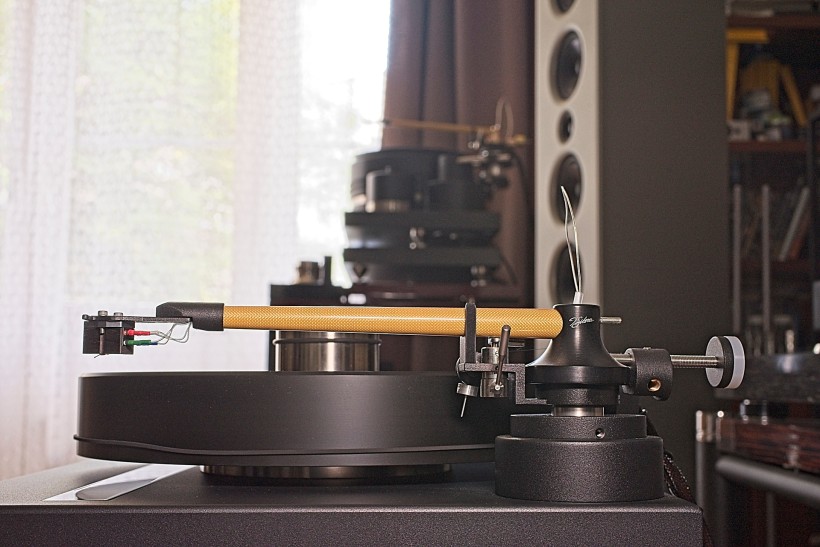
Indeed, the switch pushed the performance in the desired direction, adding some more weight, warmth, and density to the sound. That translated into a shift away from this bit cold, analytical, and „lean” sound I heard before, towards a more natural, fuller, and more saturated presentation of music. It did some good for the blues and rock albums that I started my listening sessions with, adding depth and more feeling and expression to the vocals, making them sound richer, more present, and more ‘here & now’.
It also did a trick for electric guitars, which both these genres heavily lean on, so that now they sounded more fleshy, richer, and also, when needed, a touch more / less harsh. The richer sound, with more weight, also meant heavier, more punchy, but in no way slower or weaker rhythm. That’s because PRAT (Pace, Rhythm, and Timing) was excellent right from the start, as it is one of the hallmarks of J.Sikora’s decks and tonearms, and that includes ASPIRE as well. Long story short, switching the phono stage was a step in the right direction. I had no doubts about it, so what you need to know is that if you decide to buy ASPIRE with SMPS and prefer richer, fuller presentation, you should choose your cartridge and phono stage accordingly. It will be a step in the right direction.
For my taste, though, it was still only the first step, and I still wanted more. Based on my experience of trying two different power supplies with my J.Sikora Standard ( I’d compared and after that moved from a regular linear power supply to the Reference one), I knew that replacing the SMPS with the optional linear one would most surely improve the sound even further, and that it would be a change in the desired direction. So that was my next step – unplugging the SMPS and plugging the linear PS in. I cued the first album in and…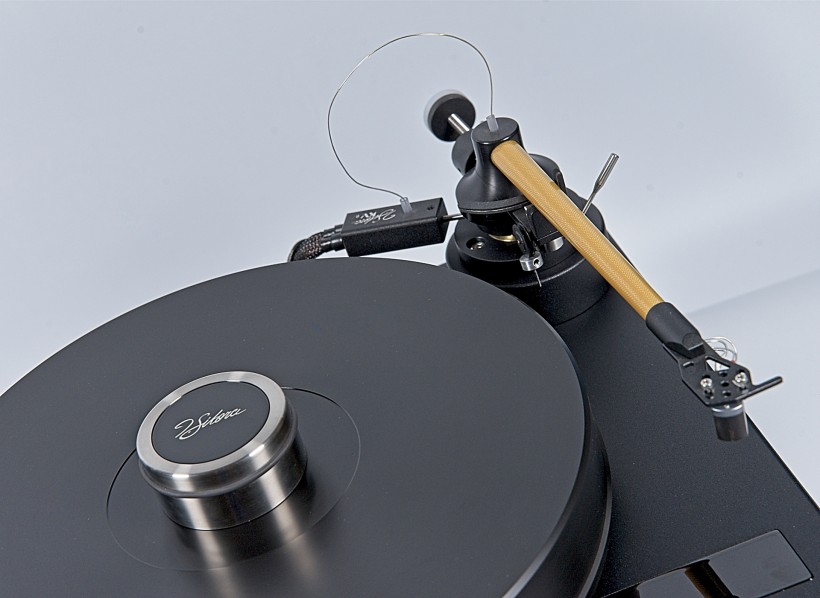
Boy, oh boy! Was I right, or what? The linear power supply made a difference, a significant one, at least from my standpoint, meaning a man used to the sound of the Standard Max and looking as much of it in ASPIRE as I could get. It is not that tested deck suddenly turned into its way more expensive sibling, but it definitely did what I expected, it got closer. Comparing it with the Initial was hard for me, as it had been quite a long time since I’d listened to the latter. The point is, though, that now, with the linear power supply, the new entry-level deck featuring so many components transferred directly from more expensive models, got even better, way better, and sounded even more like them, and, not that it matters to you, more to my liking.
I heard it with the last blues album on my list with the great Roy Gaines, but also after moving to the jazz part of my collection, which meant also higher quality recordings and releases. With those, other performance elements and qualities came to light, so to speak. While the resolution may not have been quite on the same level as with the same arm and cart on my private deck, it was still impressive! The amount of details and subtleties retrieved from, say, Jan Garbarek’s „Legend Of The Seven Dreams” (ECM), spoke volumes on how capable ASPIRE is.
The timbre and texture of Garbarek’s saxophone were presented in a clear, detailed, and yet smooth way. Its sound was dynamic and rich, established its presence in the room, and yet remained gentle and smooth. It sounded very natural, even though the whole recording is a touch bright for my taste, and it lacks a bit in terms of richness and saturation. The presentation was very open, which I always like, lively, and let the instruments breathe with lots of air surrounding them. The sound stage was pretty large, particularly its width, although I had no complaints regarding the depth either.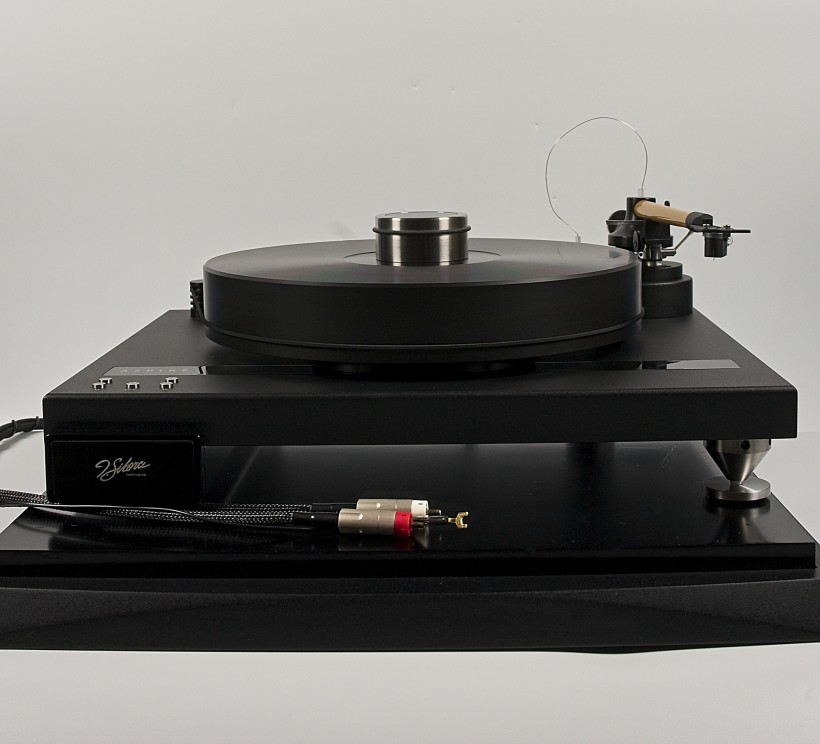
Imaging was spot on, with large, three-dimensional phantom images spread across the stage in an orderly fashion. Importantly, particularly for this album, and several others like it, ASPIRE with the linear power supply turned out to be a true storyteller. Jan Garbarek’s record, and many others I listen to later, are meant as complete stories, not sets of individual tracks, and so the climate, the continuous flow of the presentation, is very important to how it is perceived. The tested turntable did a great job at that, and the story’s flow was smooth and effortless, which translated into a completely immersive experience.
Following the path of great sounding brass instruments, I cued in Hiroshi Fukumura Quintet’s „Morning Flight”. It’s one of the few recordings I know with two trombones in the main roles, and they „rock” on this album, so to speak. Their sound with ASPIRE was very rich and deep, but also powerful and, when needed, aggressive enough to let me know the nature of these instruments. Since the tested turntable never hardened the leading edge, nor brightened it, they sounded ‘right’ and very natural.
The recording engineers did a great job of giving each of the instruments its own space on the stage, and ASPIRE conveyed that quite precisely. It allowed me to easily choose at almost any moment which of the musicians I wanted to focus on. Two trombones in the front, drums in the back right between them (although spread quite wide), piano to the right, and bass to the left. And yet, despite nice separation, coherence was still one of the key features of this presentation.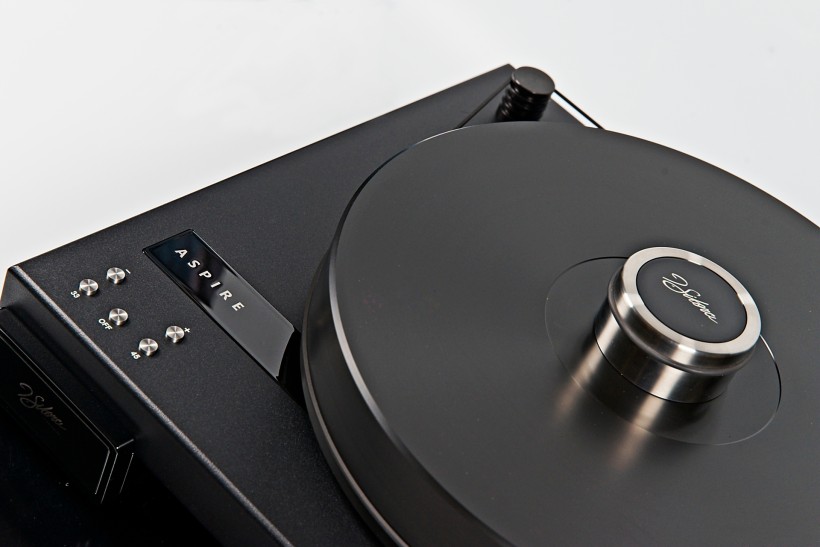
Drums were juicy and taut, and cymbals crisp, both playing with high energy when needed, or slightly withdrawn when supporting others, yet still emanating a lot of energy from the background. The double bass seemed a bit shy, pushed aside and behind trombones, but still had plenty of color, depth, and natural softness. Piano, on the other hand, boldly declared its power and size right from the start, often competing with trombones for my attention. Each keystroke sounded pure and vibrant and was strongly supported by the massive body of this instrument. This so-called entry-level turntable again offered a deeper insight into recorded music than I expected, based on other record players from this price range.
ASPIRE confirmed again its ability to resolve a surprising number of details with Wojtek Karolak’s „Birthday Concert / 80th”. The opening track, being sort of a conversation between guitar and Hammonds, pulled me in almost instantly. The latter sounded soooo smooth, so gentle, so beautiful that I couldn’t take my eyes off it. Yes, eyes, as the tested turntable proved once more how good it is when it comes to rendering a full-bodied instrument precisely placed and occupying a particular, three-dimensional space. In this case, it was also played by the great maestro who made it truly sing.
The key of such convincing rendering of the Hammonds (but also other instruments) was not as precise imaging as I am used to with Standard Max, but rather high, yet very natural, inner energy of the performance and a natural timbre that resonated with me very strongly creating a convincing impression of being in a presence of phenomenal musician. Ultimately, what mattered most was that I had a lot of fun with any and every album, and at some point, I stopped looking for or noticing the advantages of my Standard Max, but instead, I was just enjoying the musical experience with J.Sikora’s seal of quality all over it.
Summary
After spending several days listening to music with J.SIKORA ASPIRE, I am still not sure what the people who developed it had thought it would aspire to. The best one in its price range? Quite possibly, but it is a serious competitor even for some more expensive record players. Does it aspire to the high-end class? In my opinion, it does more than that, IT IS a high-end device, period, at least with the linear PS and KV9 tonearm. I realize that the term ‘high-end’ has been used quite loosely and way too often in recent years, but this is not the case. It is not the best record player on the market, it’s not even the best J.Sikora’s one, but it is damn good, no doubts about it.
Finally, does it aspire to be worthy of J.Sikora’s well-earned reputation? You can test its DNA if you want to, but all you really need to do is listen to it, and you’ll know that ASPIRE is a part of the family. If you know more expensive decks from this brand, you will find many familiar traits in ASPIRE’s performance, including brand’s hallmarks – dynamics, high energy, punch, precision, excellent PRAT, ability to resolve an abundance of details (assuming you’ll pair it with a good cartridge), and coherence. Most importantly, it delivers natural-sounding, engaging, and highly addictive performance, like all Sikora’s do. In other words, it fits the range perfectly, and for a reasonable price, it will give its owners a very good idea about what J.Sikora’s high-end performance, but also make and finish are.
Long story short, it is an impressive performer that offers all that audiophiles expect; it’s classy, but it also plays in a way that is simply fun! So, go on and have some fun listening to your favorite records with J.Sikora ASPIRE! It’s reasonably (for a high-end device) priced, quite small, good-looking, easy to set up and operate, what more could you possibly want?
Price (when reviewed):
- J.SIKORA ASPIRE with KV9 and linear PS: 9.800 EUR
- J.SIKORA ASPIRE with OEM arm and SMPS: 7.500 EUR
- J.SIKORA ASPIRE, no tonearm, with SMPS: 5.900 EUR
Manufacturer: J.SIKORA
Technical specifications (according to the manufacturer):
- Platter: Delrin®; 4 kg
- Record clamp: included (Inox)
- Materials: aluminum, Inox, cast iron
- Main bearing type: inverted with ceramic ball
- Motor: 1 pc; DC
- Belt: 1 pc; rubber
- Rotation speed selected electronically (r.p.m.): 33; 45
- Tonearms: 1 pc
- Dimensions: 430 x 350 x 180 mm
- Weight: 21 kg
- Available finishes: silver, white, black
Associated equipment:
- Digital source: a custom passive server with WIN10, Roon, Fidelizer Pro 7.10, JCAT NET XE, and JCAT USB XE cards with FERRUM HYPSOS Signature power supply, KECES P8 (mono) linear power supply for the server, JCAT USB Isolator
- D/A Converter: LampizatOr Pacific 2 +Ideon Audio 3R Master Time (USB signal regenerator)
- Analog front end: J.Sikora Standard MAX turntable, J.Sikora KV12 & J.Sikora KV12 MAX tonearms, AirTight PC-3, Audio Technica PTG33 Prestige & LE SON LS10 MKII cartridges, Grandinote Celio MK IV & ESE Lab Nibiru V 5 phono stages.
- Power amplifiers: GrandiNote Shinai, Circle Labs M200, Art Audio Symphony II (modified)
- Preamplifier: Circle Labs P300
- Loudspeakers: GrandiNote MACH4, Ubiq Audio Model ONE Duelund Edition.
- Interconnects: Bastanis Imperial x2, Soyaton Benchmark, Hijiri Million, Hijiri HCI-20, TelluriumQ Ultra Black, KBL Sound Himalaya 2 XLR, David Laboga Expression Emerald USB, David Laboga Digital Sound Wave Sapphire Ethernet
- Speaker cables: Soyaton Benchmark Mk2
- Power cables: DL Custom Audio 3D-S-AC Connect, LessLoss DFPC Signature, Gigawatt LC-3
- Power: Gigawatt PF-2 MK2 and Gigawatt PC-3 SE Evo+; a custom power line with Gigawatt LC-Y in-wall cable; Gigawatt G-044 Schuko and Furutech FT-SWS-D (R)
- Network: Silent Angel Bonn N8 + Silent Angel Forester F1 + optical LAN isolator
- Racks: Base VI, Rogoz Audio 3RP3/BBS
- Anti-vibration accessories: ROGOZ-AUDIO SMO40 and CPPB16 platforms and ROGOZ AUDIO BW40MKII feet, OMEX Symphony 3S, Franc Accessories Ceramic Disc Slim Feet and Wood Block Platform, Graphite Audio CIS-35 and IC-35 Premium



